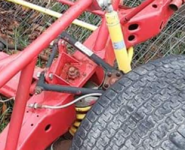rtj
Well-known member
- Joined
- Nov 5, 2011
- Messages
- 3,332

This is a photo of some old asphalt car (assumption). I see they have changed the axis of rotation of the upper a arm. I see in vette427sbc’s project thread, his lower a arms have this treatment. Is this give similar results and what is the benefit?
Vette427sbc’s Photos
http://www.vettemod.com/forum/showthread.php?t=10738&page=3
Post 72
I scanned through the thread and didn’t see an explanation.
Last edited:
